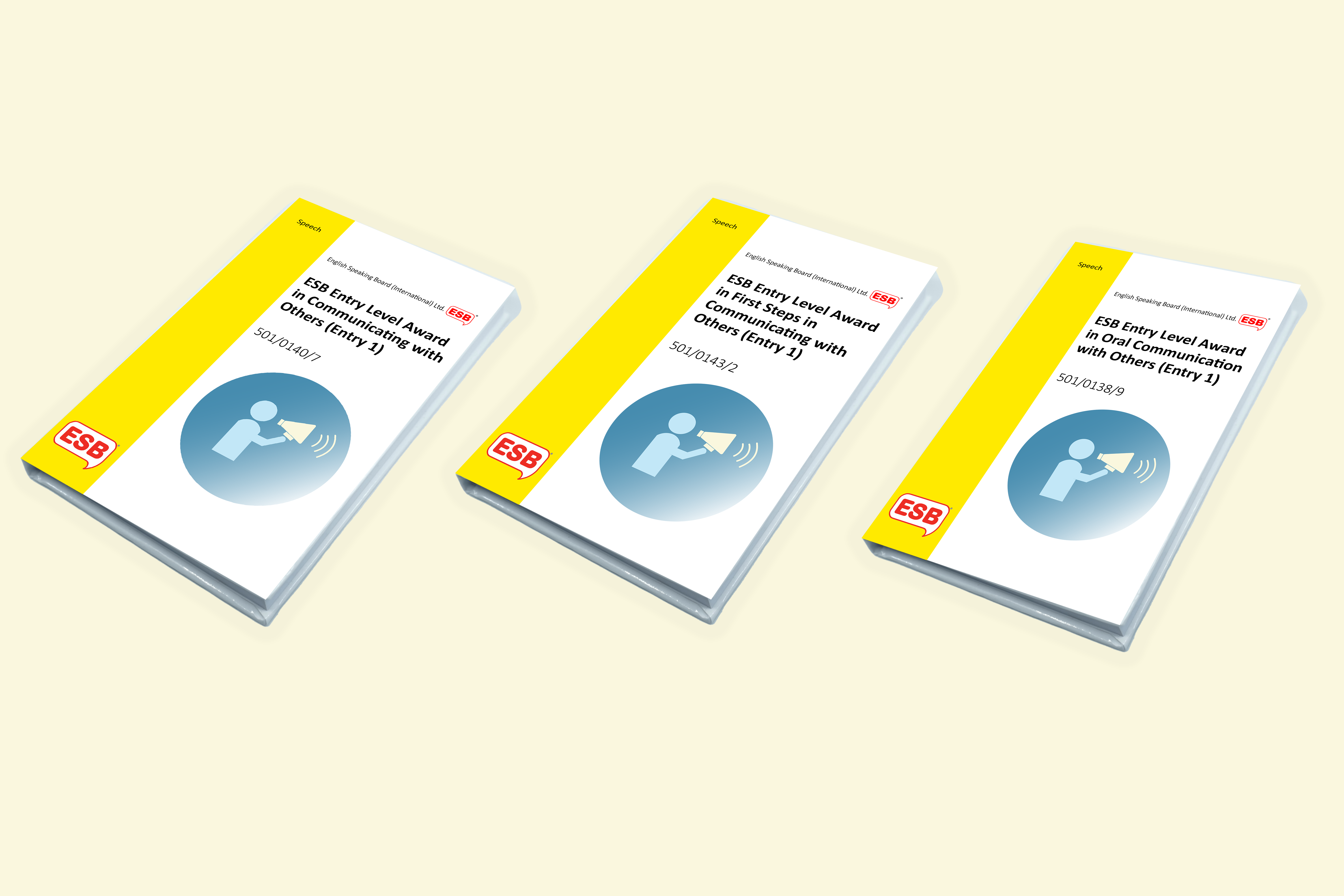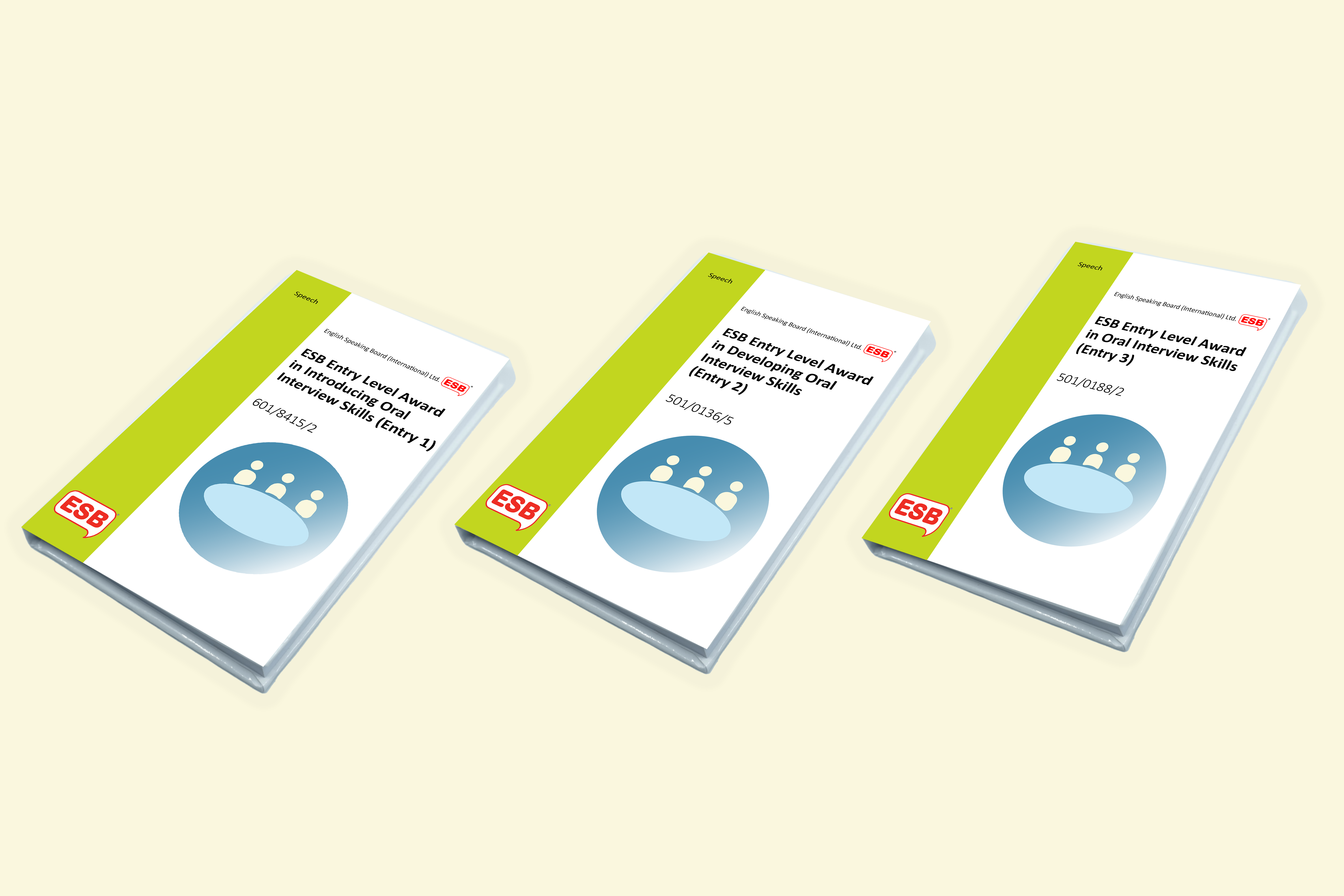Building Confidence in Communication Teacher Resources
Qualification Specifications
ESB International Building Confidence in Communication products run from Entry 1 to Entry 3 and offer progression to learners who wish to develop their oracy and communication skills for independent living and social interaction, self-expression via the arts, and interviews and the workplace. Click on the group of qualifications you would like to see and then click on View Specifications.
Teacher Resources
These Teachers’ Resources suggest ways of isolating and practising effective speaking and listening skills. There are three groups of activities: everyday interaction, giving a presentation, and fine-tuning the message. They can be adapted and differentiated for students working at different levels, and there are also some tips on inclusive practice in the classroom.
Everyday Interactions
Hello hello
- responding to greetings and farewells
- initiating greetings and farewells
- rehearsal of chunks of social language
Students start by matching phrases (for greetings and farewells) to appropriate responses and then playing a card game with them.
Call and Response
- focused listening
- rehearsal of chunks of social language
- awareness of syllables and rhythms
- turn-taking and social interaction
Students listen and then repeat and clap the rhythm of short chunks of language modelled by the leader (teacher or nominated student).
Engagement
- checking audience is following
- being an attentive audience member
- making eye-contact
- supporting others when they are speaking
The teacher gives a short talk (ca 1 minute) during which the students each have a role depending on ability (e.g. to maintain eye contact, to smile / nod, to listen and make a note, to formulate a question). The next time there is a short talk, roles change (if possible).
Q&A
- responding to questions
- asking questions (e.g. asking for clarification)
Start with a focus on question forms, and the difference between open and closed questions. Students suggest ways of starting answers, and then they work in pairs / small groups to create some questions for the other students to answer.
Giving a Presentation
Look here
- using visual aids
- connecting text to images
Students start by experiencing a short talk with and without visual aids and then discuss the role of visual aids, and how they are helpful. Phrases that connect the talk to the images are then suggested and used at appropriate points in the original talk.
How do we know?
- recognising facts vs opinions
- listening for facts
- showing understanding of how to check facts
Students discuss the difference between facts and opinions, and the different ways that facts could be established and verified. They then listen to a short talk and pick out 3 facts. In pairs they can decide how they could fact-check them (which source of information they might use).
My thoughts exactly
- planning and structuring a talk
- phrases for opening / closing / moving on in a talk
- using visual aids
Students discuss the different stages of a talk. They listen to a short talk and identify how they knew that they were moving from one stage to another. In pairs they can collect together phrases for signalling the structure to the audience, as well as drawing attention to visual aids to support the talk.
Fine-tuning the message
Your Voice, my voice
- differentiating dialogue from narrative in text
- using different voices to signify different speakers
- understanding the role of punctuation in text
In texts including dialogue, the punctuation that signals speech is highlighted. Students discuss who is saying these words, and what their voice would sound like. They can then prepare to read these short texts aloud, using different voices (or different voice quality) for the different characters, and the narrative.
Say it how you feel
- expressing emotions through volume, tempo, intonation and facial expressions
Students listen to short clips of music that are louder, quieter, slower or faster and talk about how it makes them feel. They then transfer this to their own language, becoming aware of what emotions they are conveying, and matching facial expressions to reinforce the message.
My 'telephone voice'
- telephone phrases
- strategies to compensate for not seeing the other speaker
- phrases for checking arrangements
Students discuss what is missing when they talk on he phone, how not seeing the other person makes communication more difficult, and what they could do to compensate. They collect together phrases for checking understanding and clarifying arrangements made, and then have phone conversations in which they have to arrange to meet their friends.



